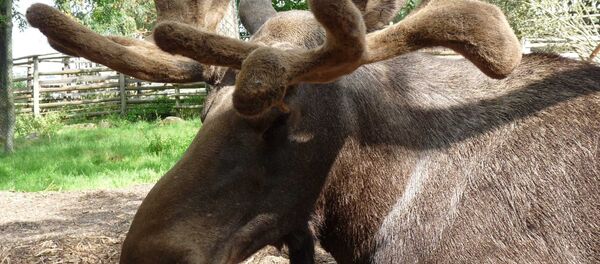Grazing elk have been found to inflict enourmous damage to growing Swedish pine forests, which is estimated to result in billions of kronor in losses, a recent study showed. Traces of grazing damage may be seen in pine forests across the whole county, although forests in southern Sweden have been the hardest hit, according to the latest count.
no home without a #moose / inget hem utan #älg / kein Haus ohne #elch / Geen thuis zonder #eland pic.twitter.com/ris2znmIsh
— Aatjuh (@_Aatjuh_) August 23, 2016
"The damage is extensive, and in many places it has already gone too far, which renders pine forest care ineffective. This makes planting or rejuvenation efforts virtually meaningless," Jonas Bergqvist, forest specialist at the National Board of Forestry, told Swedish Radio.
For instance, fir plantations risk yielding a more fragile forest, whereas spruce is likely to develop root decay, whereupon the smitten trees are likely to become more susceptible to storms. The storm-affected areas are in turn more vulnerable to the bark beetle, which may further increase damage to the forest environment. Therefore, the authorities hope that forest owners continue planting pines, despite the risk of the plantations becoming elk food.
According to forester Hasse Bengtsson, who works on the "More Pines" project, the choice is not solely between planting more pines or shooting more elk.
"You need to work with many different facets simultaneously to create balance," Hasse Bengtsson pointed out.
Dinner time. #sonyalpha #sonya58 #moose #alcesalces #älg #småland #naturfoto #nature #wildlife #vilt by rickardsjoq… pic.twitter.com/u84Gwg0QNU
— Natur & Friluftsliv (@Natur_liv) April 29, 2016
The elk is a herbivore and is capable of consuming many types of plant and fruit. A typical elk, weighing some 400 kilograms, may easily consume 32 kilograms of food per day. Remarkably, elk are commonly denoted as browsers ("concentrate selectors"). Like giraffes, elk carefully select foods with less fiber and more concentrations of nutrients.
Sweden, a sparsely-populated Nordic nation of almost 10 million, has an impressive population of around 300,000 elk, according to the Swedish Hunters Association. In summertime, the population increases to around 400,000, whereupon around 100,000 end up being shot by Sweden's 300,000 hunters. Due to the great differences, a distinction between summer and winter populations of the elk is made. Hunting accounts for 93 percent of elk deaths, whereas other causes of death among the elk include traffic accidents (both by car and train), predators and diseases.
#Moose #älg #sweden @Sweden_AR 😊 pic.twitter.com/PrJgy5kssE
— Tarek_m8 (@Tarekabuhammoud) August 11, 2016



